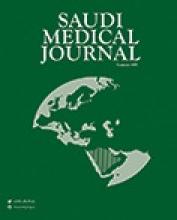Abstract
OBJECTIVE: There is only limited data related to the subungual glomus body. We therefore studied the structure of this organ, aiming to obtain further evidence. Additionally, we encountered undefined receptor like structures in close association with these glomus cells, named them as lamellated bodies and examined both of the structures at light and electron microscopic levels.
METHODS: This study was carried out at the Faculty of Medicine, Hacettepe University, Ankara, Turkey, during the time period May 2001 to March 2002. In this study, the subungual tissues of 4 patients were examined.
RESULTS: Within subungual tissue, 2 groups of morphologically significant structures were determined by light microscopy. The first structure was described as glomus body. It was characterized as an encapsulated structure, rich in rounded clear cells filling its central compartment. The latter structure having a lamellated appearance was described as lamellated body. In the electron microscopic examination, lamellated bodies were characterized by central filament rich large cells and surrounding cytoplasmic processes of ensheathing cells, some of which were vacuolated. Glomus bodies were surrounded by a capsule and centrally located numerous rounded cells which reflected the structural features of an active cell.
CONCLUSION: The lamellated bodies are very unusual structures and they are not found in any other part of the body. The structural organization of the ensheathing cells in the lamellated bodies greatly resembles many skin associated receptors. Therefore, we planned future studies by using immunohistochemistry, to reveal nervous elements for structural contribution.
- Copyright: © Saudi Medical Journal
This is an open-access article distributed under the terms of the Creative Commons Attribution-Noncommercial-Share Alike 3.0 Unported, which permits unrestricted use, distribution, and reproduction in any medium, provided the original work is properly cited.






